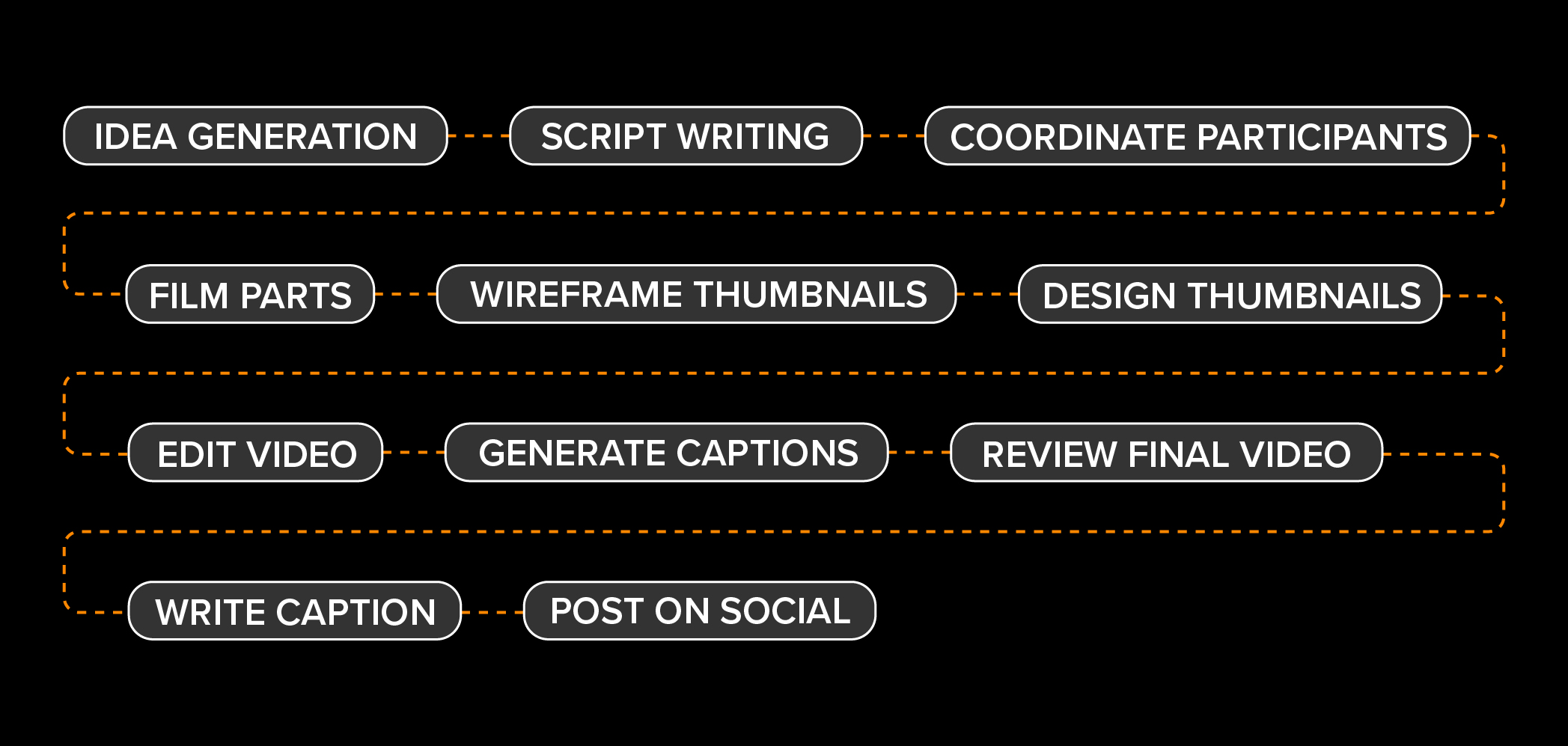How to work smarter with agile project management templates
By: Ash Larizza
July 5, 2023 | Reading Time: 6 mins
Let me give you a scenario: the ambitious, starry-eyed creatives on your social media team have come up with an awesome, timely idea. But when the post-date rolls around, the team is scrambling to finish up and get it out on time. Or worse—missing the deadline entirely.
If you’ve done social media, you know it’s so much harder than it looks. On the outside, the audience sees a beautifully designed and highly relevant Instagram post. But what they don’t see is all the organizing, brainstorming, writing, designing, and collaborating that went into creating that post, all while hitting a deadline.
Successful marketing is all about strategy, creativity, and staying relevant. But you could have all those things and still fail if you’re not hella organized. We know this firsthand because we’ve struggled with it ourselves.
Optimizing our internal processes
At Stryve, we’ve been huge fans of agile marketing for a long time. It’s become second nature for us to use Jira Kanban boards and sprints to efficiently get shit done for our clients.
Even though we were in a groove with client work, getting deliverables done on time and within budget, the same just wasn’t happening on our social team. Client work always comes first. We were biting off more than we could chew, going over hours and budget, and stretching our team too thin in the process.
Something needed to change—and using the same processes we use to work with our clients was the answer to solving our internal struggle.
So, how do we work with our clients then?
Step 1: Establish the needs of the client and define scope
For every client, we create a handful of Jira epics based on the deliverables of the project. We log all our time to these epics so we can accurately report to the team and the client how our hours are being used.

Internally, we only have one epic for social, so there wasn’t much we could do to split that up further without restructuring all of our other internal projects.
Let’s dig deeper.
Step 2: Break down the project into bite-sized tasks
Once we’ve established the scope and set up epics for each major part of the project, we create Jira tasks (otherwise known as issues or stories) that link to each of the epics. This involves taking stock of all the little pieces that go into accomplishing the deliverable and splitting them up amongst the team. This helps us manage time, use resources wisely, and plan how long things are going to take.
We were doing this for social media tasks—each new post idea would have a task created for it and a due date—but this was very high level. If we consider the post below, the task would be called something like “Create Easter Egg Post”. Full stop. This is a good start but doesn’t include all the steps necessary in getting the post to the finish line.
This was an area where we had some work to do.
Step 3: Work in two-week sprints
For most clients, we work in two-week sprints. Using Kanban boards on Jira, we look at what tasks need to be done by each team member during that time frame. We’ll hold weekly scrum meetings to quickly go over resources and make sure we’re on track to get work done by the end of the sprint and move on to the next one.
For social, we make use of Kanban boards and sprints, but we only meet biweekly to discuss upcoming and current tasks. Despite having these meetings, we’d often find that due dates would creep up on us and we’d realize that there were more pieces to the puzzle than we’d planned for. This is when the scrambling would start.
We needed to find a way to avoid the scramble without adding any more internal meetings or last-minute tasks.
Step 4: Report on hours monthly
It’s super important that we’re transparent with our clients about how long things are taking and where our time is being spent. Sometimes it takes longer to do something than you thought, and sometimes it takes less. Reporting monthly to our clients keeps everyone aware and holds everyone accountable for how the project is progressing.
We do this internally as well, monitoring how much time is spent on internal tasks like marketing, social media, business development, culture, ops, and more. But a while back, when we reported on social, we noticed we were using way more hours than planned.
This brought us to the realization that we needed to find a better way to get our social posts done.
Revisit Step 2: Break down the project into bite-sized tasks
We realized that each social post could act as an epic, while all the pieces involved in getting it done could act as the tasks under that epic. There are a lot of tasks that go into creating one post for social media, and the only way to keep them organized is to break them down step by step.

Since we couldn’t create new epics for each post, we used the Template Repository and Issue Templates for Jira app, which we were already using for some of our clients.

We started by creating a template parent task for our social posts. Let’s use a carousel as an example. We called the task “organize and manage [content piece] carousel.” From there, we dissected previous carousels that we’d made to see what tasks went into getting it from the idea stage to the posting stage and then broke each of those steps into a child task underneath the parent. This gave us a bird’s eye view of the entire process, which made it easy to establish who was needed, and how much time it would take to get it to the finish line.

Now, for every carousel, video, or regular post we make for social, we create tasks from one of our templates. The details and organizing are already figured out for us, meaning we can get off to the races creating the dang thing.
One more thing to solve that scrambling issue
At this point, the templates were working great. They helped us to better see the big picture of a project, leading to improved time and effort estimations and task coordination. But there was still one problem.
Our design team would whip up a killer carousel, but as we’d go to post it we’d often find ourselves tasking them with converting the images from one file type to another because proper design specs hadn’t been provided from the get-go. Since every social media platform has different dimensions, restrictions, and best practices, our designers needed to be given the right info upfront to avoid unnecessary rework.
Force thoughtfulness with a design brief
Now, before anything else happens, our first step is for our team to fill out a design brief, answering questions such as what kind of post it is (image, carousel, or video), where it will be posted, and what pieces are needed along with the specs. This forces the team to be thoughtful about what is required from the design team ahead of time, eliminating any of that last-minute scrambling.
“There’s no magic in magic, it’s all in the details” – Walt Disney
Now that we have the design brief and task templates, all we have to do is hit a button to maintain a consistent process for all the different types of content we produce. Across our team, we’ve seen improvements in efficiency, standardization, and error reduction. Our socials are thriving, and our workflow has improved greatly.
As I said, creativity and strategy are nothing without organization and attention to detail. Good quality work is a product of planning and execution—that’s where the magic is made.








